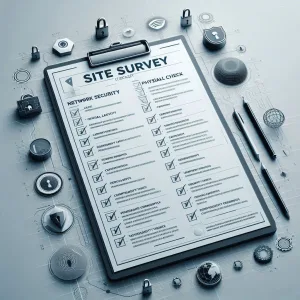Contract compliance auditing is a critical process that involves a thorough examination of contracts to ensure that all parties involved are adhering to the terms and conditions outlined in those agreements. For this reason, having a skilled contract compliance auditor is essential for organizations to maintain integrity and accountability in their contractual relationships.
- Definition of Contract Compliance Auditing: A contract compliance audit is an in-depth review of contract terms to verify that both internal and external parties are meeting their obligations as specified in the contract. This process can encompass individual contracts, specific categories of contracts, or an entire portfolio, and can be conducted at various intervals throughout the contract lifecycle [1][13].
- Significance in Organizational Governance: The importance of contract compliance auditing extends beyond mere adherence to contractual terms; it plays a vital role in organizational governance. By ensuring compliance, organizations can mitigate risks associated with non-compliance, such as financial penalties and reputational damage. Regular audits help identify areas of non-compliance, allowing organizations to take corrective actions that can lead to cost savings and improved operational efficiency [11][10]. Furthermore, effective contract compliance auditing supports transparency and accountability, which are essential components of good governance.
- Role of Auditors in Ensuring Compliance: Auditors play a pivotal role in the contract compliance auditing process. They are responsible for systematically reviewing various aspects of contracts, including financial records, operational processes, and performance metrics, to verify adherence to the agreed-upon terms [2]. By leveraging data analytics, auditors can enhance their ability to assess compliance effectively. This modern approach allows for more efficient risk assessments and can uncover insights that traditional auditing methods may overlook. The integration of data analytics into auditing practices not only streamlines the process but also improves the overall quality of the audit findings [3][4].
Contract compliance auditing is a foundational element of effective organizational governance, and the role of auditors is crucial in ensuring that contractual obligations are met. As data analytics continues to evolve, its application in auditing practices will further enhance the effectiveness and efficiency of contract compliance audits.
The Evolving Landscape of Auditing
In recent years, the field of auditing has undergone significant transformations, particularly with the integration of data analytics. This shift is reshaping how internal auditors, especially those focused on contract compliance, approach their work.
Overview of Traditional Auditing Methods
Traditionally, auditing practices relied heavily on manual processes and subjective assessments. Auditors would review financial records, operational processes, and compliance with contractual obligations through a combination of sampling and detailed examinations. This approach often involved:
- Manual Data Collection: Auditors would gather data from various sources, which could be time-consuming and prone to human error.
- Sampling Techniques: Due to the volume of data, auditors often used sampling methods to draw conclusions, which could lead to oversight of critical issues.
- Periodic Reviews: Audits were typically conducted at set intervals, which meant that any compliance issues could go undetected until the next audit cycle.
While these methods have served their purpose, they are increasingly seen as inadequate in the face of growing complexities in business operations and regulatory environments.
Limitations of Conventional Approaches
The limitations of traditional auditing methods have become more pronounced as organizations expand and data volumes increase. Key challenges include:
- Inefficiency: Manual processes can be slow, leading to delays in identifying and addressing compliance issues.
- Limited Scope: Sampling can result in a lack of comprehensive insights, potentially missing significant risks or non-compliance instances.
- Reactive Nature: Periodic audits often mean that organizations are responding to issues after they arise, rather than proactively managing risks.
These limitations highlight the need for a more dynamic and responsive approach to auditing, particularly in contract compliance, where adherence to terms is critical for organizational success.
The Rise of Data Analytics in Auditing
In response to these challenges, data analytics has emerged as a powerful tool in modern auditing practices. The integration of data analytics allows auditors to:
- Enhance Risk Assessment: By analyzing large datasets, auditors can identify patterns and anomalies that may indicate compliance risks, enabling a more proactive approach to risk management [3].
- Automate Processes: Data analytics can streamline data collection and analysis, reducing the time spent on manual tasks and increasing the efficiency of audits [4].
- Continuous Monitoring: With the ability to conduct continuous auditing, organizations can maintain oversight of compliance in real-time, rather than waiting for periodic reviews [11].
The rise of data analytics in auditing is not just a trend; it represents a fundamental shift in how auditors operate. By leveraging advanced analytical techniques, internal auditors can provide deeper insights into contract compliance, ultimately leading to improved organizational performance and risk mitigation.
In conclusion, as the landscape of auditing continues to evolve, the integration of data analytics is becoming essential for internal auditors. This shift not only enhances the effectiveness of contract compliance audits but also positions organizations to better navigate the complexities of modern business environments.
The Role of Data Analytics in Contract Compliance Auditing
In the realm of internal auditing, particularly in contract compliance auditing, the integration of data analytics has become a transformative force. This section explores how data analytics enhances the auditing process, providing deeper insights and improving compliance outcomes.
Insights into Compliance Patterns
Data analytics enables auditors to sift through vast amounts of data to identify compliance patterns effectively. By analyzing historical contract data, auditors can establish benchmarks and norms, which serve as a foundation for evaluating current compliance. This analytical approach allows for:
- Trend Analysis: Auditors can track compliance over time, identifying whether adherence to contract terms is improving or deteriorating. This trend analysis can highlight areas where compliance is consistently strong or weak, guiding future audit focus [1].
- Performance Metrics: By employing key performance indicators (KPIs), auditors can measure compliance against established standards. Data analytics facilitates the visualization of these metrics, making it easier to communicate findings to stakeholders [2].
Identification of Anomalies and Potential Risks
One of the most significant advantages of data analytics in contract compliance auditing is its ability to detect anomalies and potential risks. Through advanced analytical techniques, auditors can:
- Anomaly Detection: Data analytics tools can flag unusual transactions or patterns that deviate from expected behavior. For instance, if a vendor consistently submits invoices that exceed agreed-upon amounts, this could indicate a compliance issue that warrants further investigation [3].
- Risk Assessment: By analyzing data from various sources, auditors can assess the risk associated with specific contracts or vendors. This proactive approach allows for the prioritization of audits based on risk levels, ensuring that resources are allocated effectively [4].
The role of data analytics in contract compliance auditing is pivotal. By providing insights into compliance patterns, identifying anomalies, and showcasing successful case studies, data analytics empowers internal auditors to enhance their auditing practices significantly. As the field continues to evolve, embracing these analytical tools will be essential for auditors aiming to ensure robust contract compliance.
Techniques and Tools for Data Analytics in Auditing
In the evolving landscape of internal auditing, the integration of data analytics has become essential for enhancing contract compliance auditing. This section explores various tools and techniques that auditors can leverage to improve their auditing processes, ensuring accuracy and efficiency.
Data Analytics Tools for Auditors
Auditors have access to a variety of sophisticated data analytics tools that can significantly enhance their ability to analyze large volumes of data. Some of the most widely used tools include:
- ACL (Audit Command Language): This tool is designed specifically for auditors, allowing them to perform data extraction, analysis, and reporting efficiently. ACL helps in identifying anomalies and patterns in financial data, which is crucial for compliance auditing [5].
- IDEA (Interactive Data Extraction and Analysis): IDEA is another powerful tool that enables auditors to import data from various sources, perform complex analyses, and generate reports. Its user-friendly interface makes it accessible for auditors with varying levels of technical expertise.
- Tableau: Known for its data visualization capabilities, Tableau allows auditors to create interactive dashboards that can help in visualizing compliance data. This tool aids in identifying trends and patterns that may indicate compliance issues.
Analytical Techniques
In addition to utilizing advanced tools, auditors can employ several analytical techniques to enhance their auditing processes:
- Regression Analysis: This technique helps auditors understand the relationships between different variables within the data. By applying regression analysis, auditors can identify factors that may influence compliance outcomes, allowing for more targeted audits [5].
- Trend Analysis: By examining historical data, auditors can identify trends over time. This technique is particularly useful for spotting irregularities or shifts in compliance that may warrant further investigation.
- Predictive Analytics: This advanced technique uses historical data to forecast future compliance risks. By leveraging predictive analytics, auditors can proactively address potential issues before they escalate, thereby enhancing the overall compliance framework.
Integrating Tools into the Auditing Process
To effectively integrate data analytics tools into the auditing process, auditors should consider the following steps:
- Data Collection: Gather relevant contracts, financial records, and performance data. This foundational step ensures that auditors have access to the necessary information for analysis [15].
- Tool Selection: Choose the appropriate data analytics tools based on the specific needs of the audit. Factors to consider include the complexity of the data, the required analysis, and the auditor’s familiarity with the tools [11].
- Training and Development: Invest in training for auditors to ensure they are proficient in using the selected tools. This investment in skill development is crucial for maximizing the benefits of data analytics in auditing.
- Continuous Monitoring: Implement a continuous auditing approach that leverages data analytics for ongoing compliance monitoring. This proactive strategy allows auditors to identify and address compliance issues in real-time, enhancing the overall effectiveness of the audit process [6].
By adopting these tools and techniques, internal auditors can significantly enhance their contract compliance auditing efforts, leading to improved accuracy, efficiency, and insights into compliance risks. The integration of data analytics not only transforms traditional auditing methods but also positions auditors to better navigate the complexities of modern compliance challenges.
Challenges and Considerations in Implementing Data Analytics
In the evolving landscape of internal auditing, the integration of data analytics into contract compliance auditing presents both opportunities and challenges. As organizations strive to enhance their auditing practices, it is crucial to acknowledge the potential obstacles that may arise when incorporating data analytics. Here are some key considerations:
- Data Quality and Integrity Issues: One of the foremost challenges in utilizing data analytics is ensuring the quality and integrity of the data being analyzed. Inaccurate or incomplete data can lead to misleading insights, which may compromise the effectiveness of the audit. Auditors must implement robust data management practices to verify the accuracy of financial records and operational processes, as well as to ensure that the data used for analysis is reliable and relevant [4].
- Need for Auditor Training and Skill Development: The successful implementation of data analytics in auditing requires auditors to possess a certain level of technical proficiency. This includes understanding data analytics tools and methodologies, as well as the ability to interpret complex data sets. Continuous training and skill development are essential to equip auditors with the necessary competencies to leverage data analytics effectively. Organizations should invest in training programs that focus on enhancing these skills to keep pace with technological advancements [13][14].
- Concerns Regarding Data Privacy and Compliance with Regulations: As auditors increasingly rely on data analytics, they must navigate the complexities of data privacy and regulatory compliance. The use of big data raises ethical considerations, particularly in ensuring that sensitive information is handled securely and in accordance with applicable laws. A data-centric approach to security is vital to mitigate risks associated with data breaches and to maintain compliance with regulations [2][8]. Auditors must be vigilant in understanding the legal implications of data usage and ensure that their practices align with industry standards.
While data analytics offers significant potential to enhance contract compliance auditing, it is imperative for internal auditors to address these challenges proactively. By focusing on data quality, investing in auditor training, and prioritizing data privacy, organizations can effectively harness the power of data analytics to improve their auditing practices.
Future Trends in Contract Compliance Auditing
In the evolving landscape of internal auditing, particularly in the realm of contract compliance, the integration of data analytics is becoming increasingly pivotal. As organizations strive for greater efficiency and accuracy, advancements in technology, especially artificial intelligence (AI) and machine learning, are set to redefine auditing practices. Here are some key trends and predictions regarding the future of contract compliance auditing:
- Technological Advancements: The future of auditing is heavily influenced by innovations such as AI and data analytics. These technologies enable auditors to analyze vast amounts of data in real-time, moving away from traditional sampling methods to a more comprehensive examination of contracts and compliance issues. This shift allows for a more thorough understanding of compliance risks and contract performance, ultimately leading to better decision-making [10][12].
- Enhanced Predictive Analytics: AI is expected to dramatically improve predictive analytics capabilities, making them more accurate and insightful. By leveraging advanced predictive models, auditors can forecast legal outcomes and identify potential compliance issues before they arise. This proactive approach not only enhances compliance but also helps organizations adapt their strategies in anticipation of regulatory changes [9][6].
- Automation of Processes: The increasing reliance on automation in auditing processes is another significant trend. AI and machine learning can automate routine tasks such as data extraction, document review, and contract analysis. This not only streamlines the auditing process but also reduces the risk of human error, allowing auditors to focus on more strategic aspects of compliance management [8][14].
- Data-Driven Decision Making: As data analytics becomes more integrated into auditing practices, the emphasis on data-driven decision-making will grow. Auditors will need to harness the power of big data analytics to derive insights from contract data, enabling them to make informed decisions that enhance compliance and operational efficiency [4].
- Encouraging a Forward-Thinking Mindset: For internal auditors and data analysts, embracing these technological advancements is crucial. A forward-thinking mindset will be essential for adapting to the rapidly changing audit landscape. By staying abreast of emerging technologies and their applications in auditing, professionals can position themselves as valuable assets to their organizations [11][12].
The future of contract compliance auditing is poised for transformation through the integration of data analytics and advanced technologies. By embracing these trends, internal auditors and data analysts can enhance their practices, improve compliance outcomes, and contribute to the overall success of their organizations.
Conclusion
In the evolving landscape of internal auditing, the integration of data analytics into contract compliance auditing has emerged as a transformative force. The utilization of data analytics not only streamlines the auditing process but also enhances the accuracy and effectiveness of compliance assessments. Here are the key takeaways:
- Importance of Data Analytics: Data analytics plays a crucial role in enhancing compliance auditing by enabling auditors to extract valuable insights from contract data and performance metrics. This approach allows for the identification of trends, patterns, and anomalies that may otherwise go unnoticed, ultimately leading to more informed decision-making and risk mitigation [2][11].
- Embracing Data-Driven Approaches: Auditors are encouraged to adopt data-driven methodologies in their practices. By leveraging advanced analytics tools, auditors can manage larger datasets and uncover nuanced relationships within contract compliance, which can significantly improve the audit’s overall effectiveness [12]. This shift towards a data-centric approach not only enhances the quality of audits but also aligns with modern auditing standards and expectations.
- Continuous Learning and Adaptation: The field of auditing is continuously evolving, and it is imperative for auditors to engage in ongoing learning and adaptation. Embracing new technologies and methodologies, such as data analytics, will empower auditors to stay ahead of the curve and respond effectively to the dynamic challenges of contract compliance. This commitment to professional development will ultimately lead to more robust auditing practices and improved organizational outcomes [4][8].
In conclusion, the integration of data analytics into contract compliance auditing is not just a trend; it is a necessity for modern auditors. By embracing these tools and fostering a culture of continuous improvement, internal auditors can significantly enhance their effectiveness and contribute to the overall success of their organizations.
Find out more about Shaun Stoltz https://www.shaunstoltz.com/about/
This post was written by an AI and reviewed/edited by a human.



